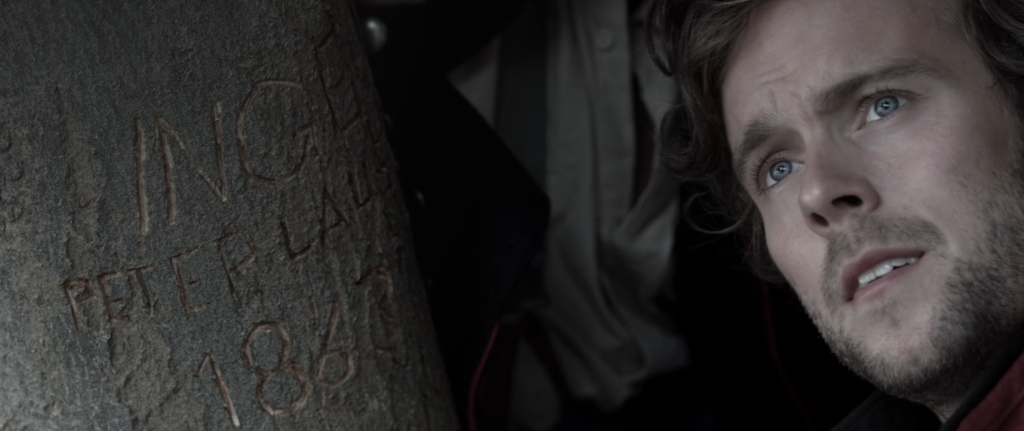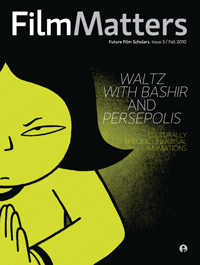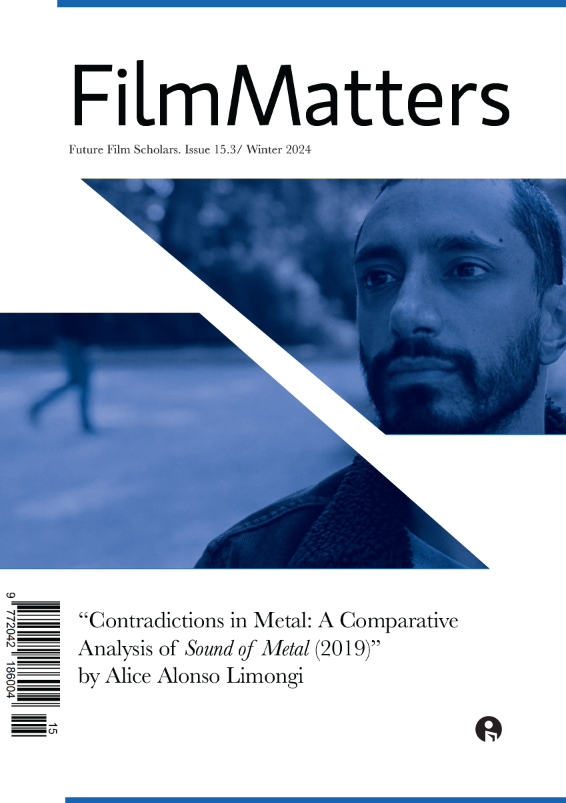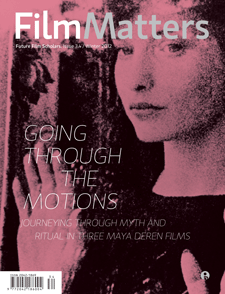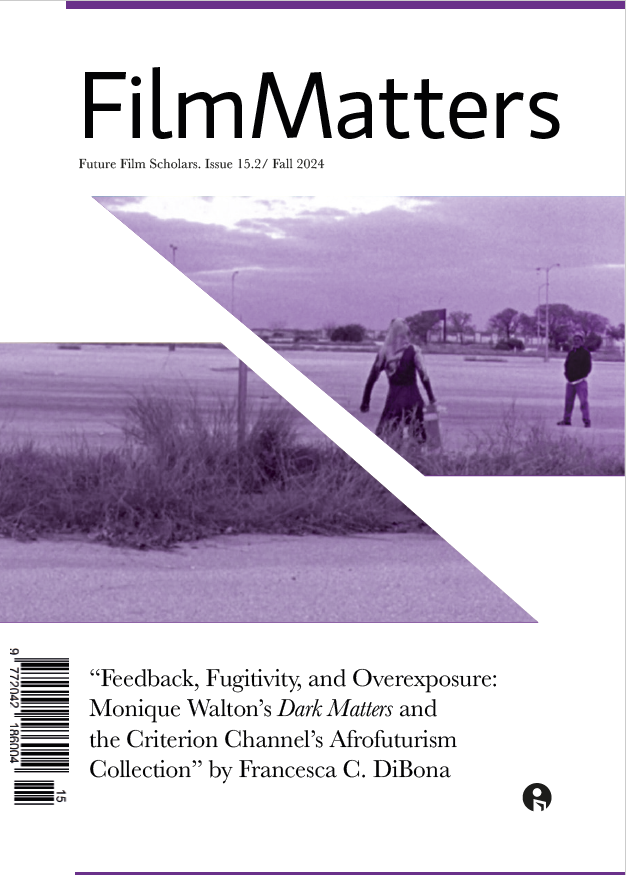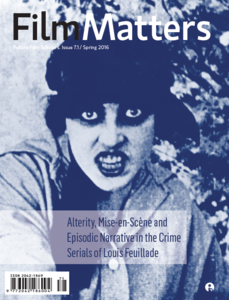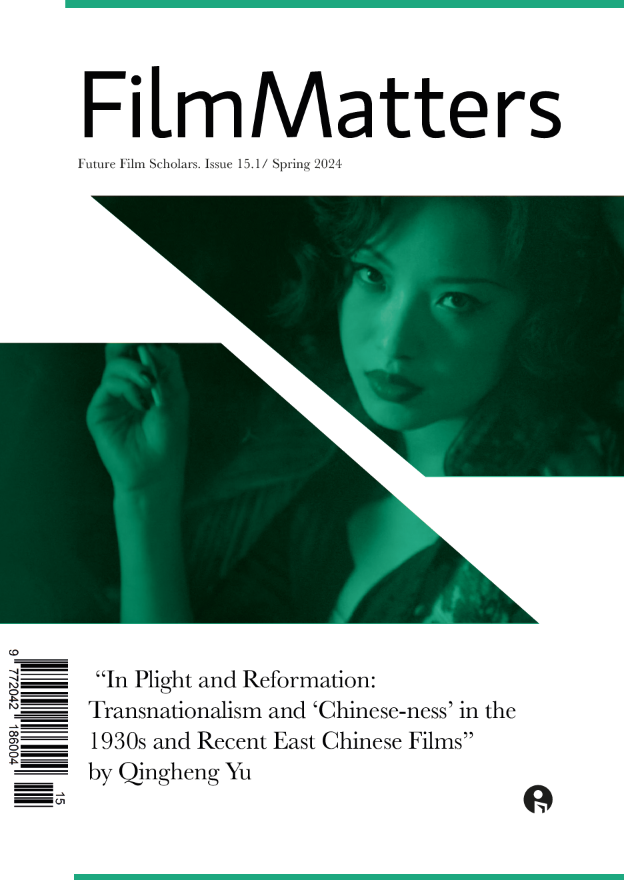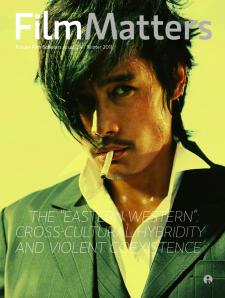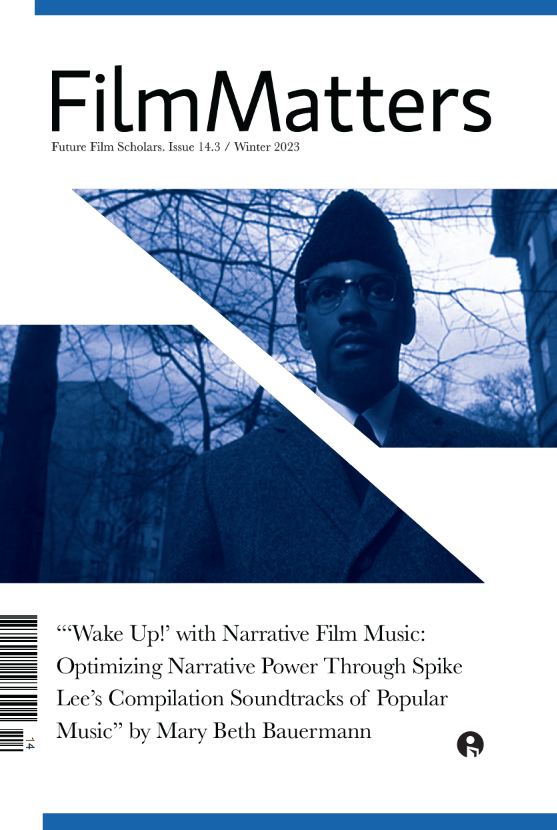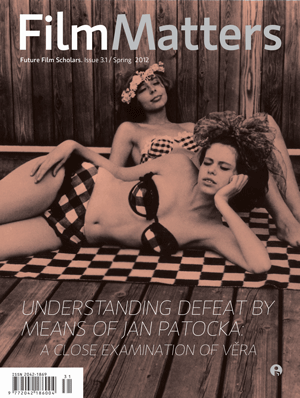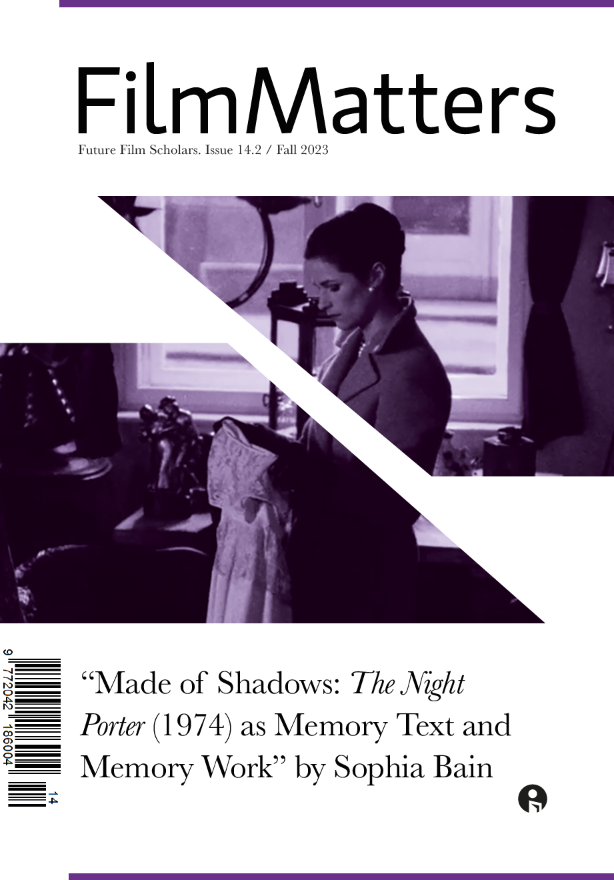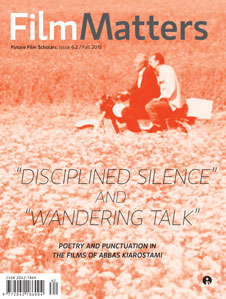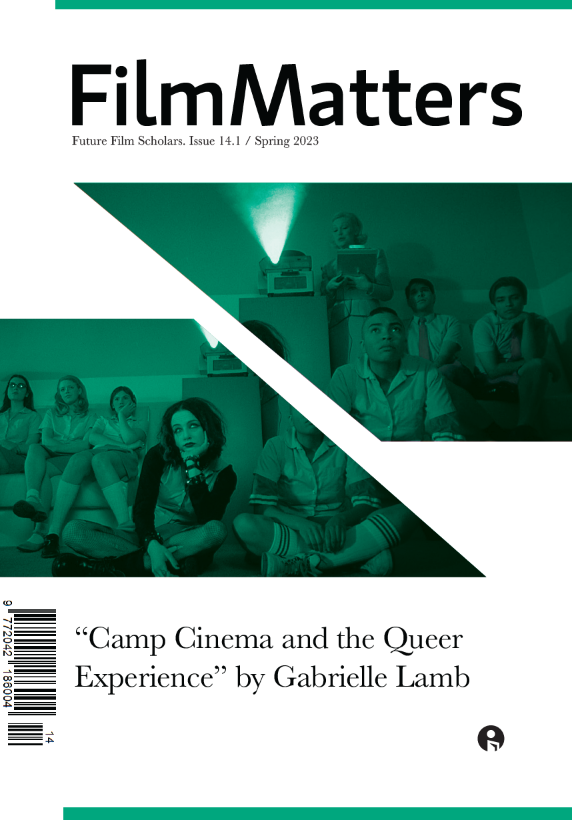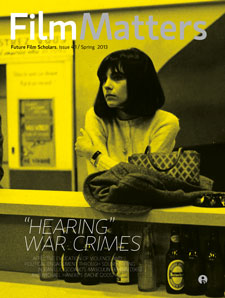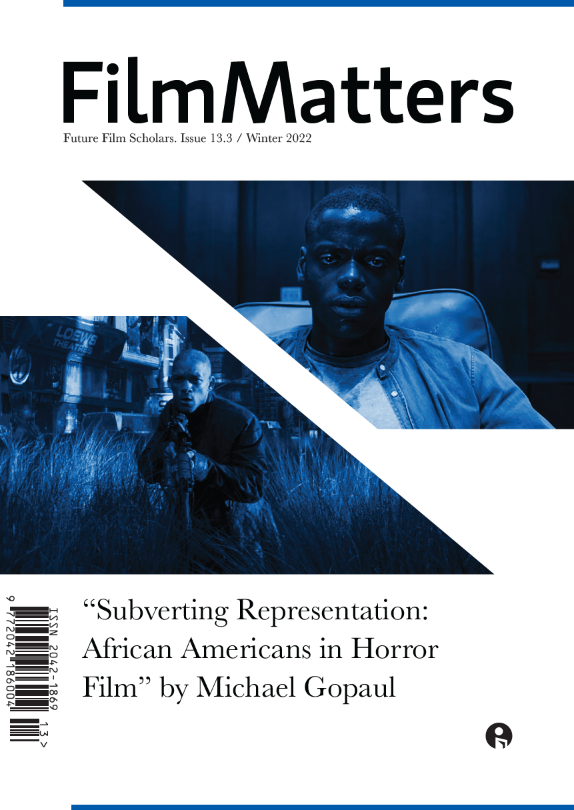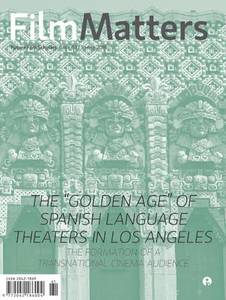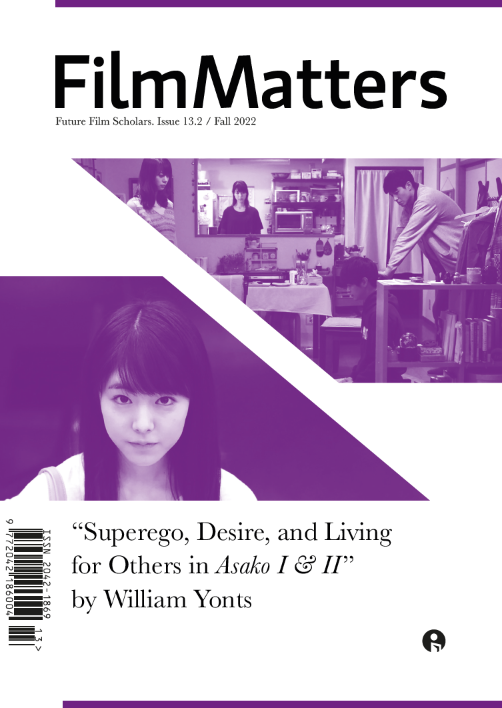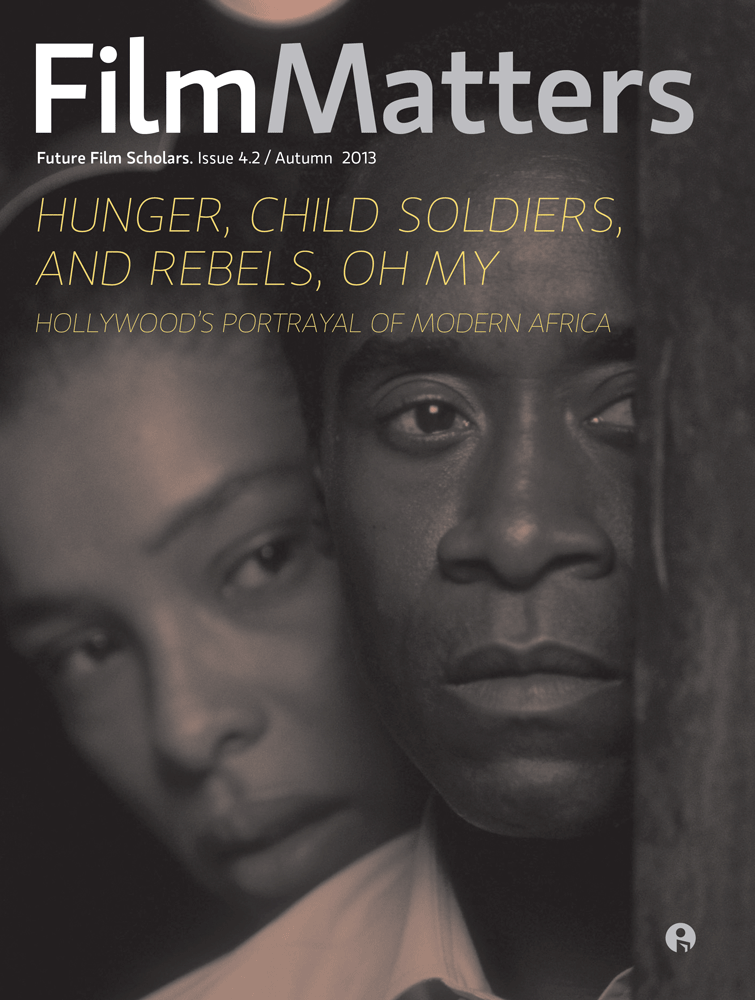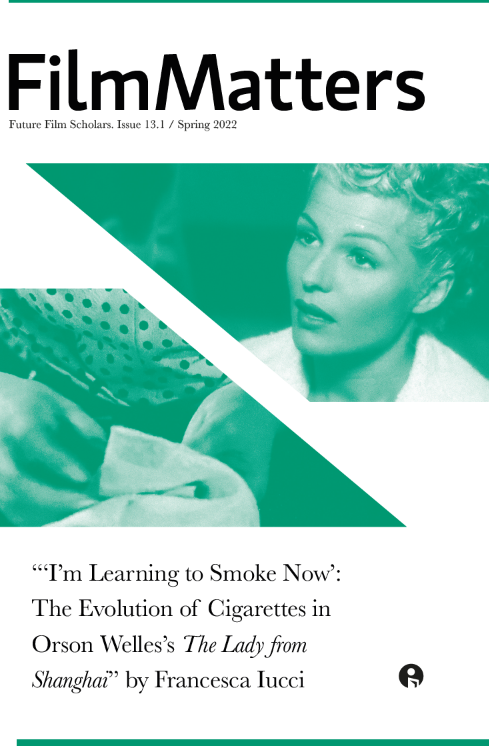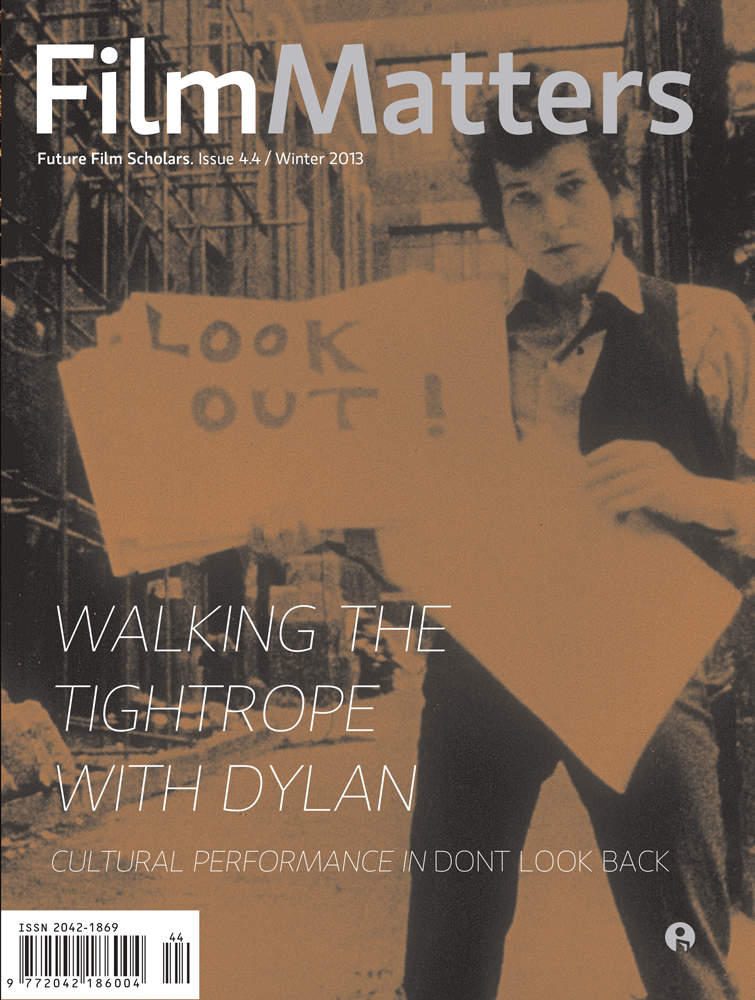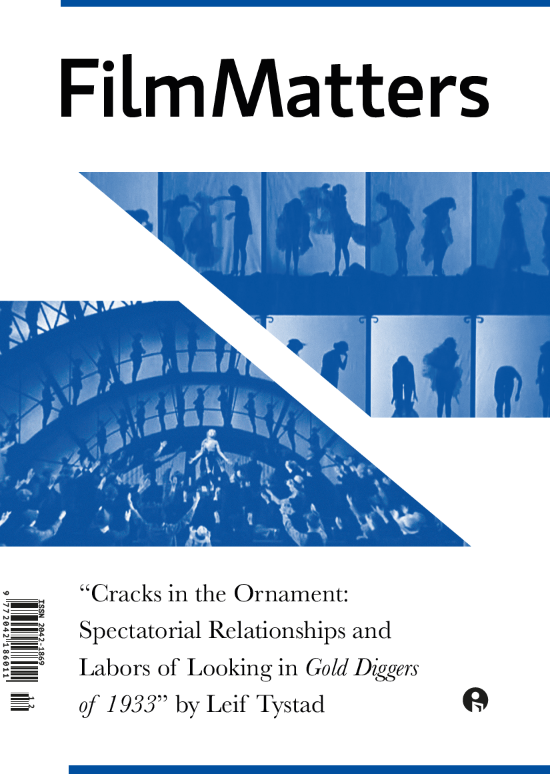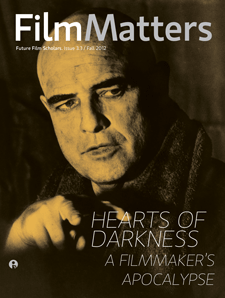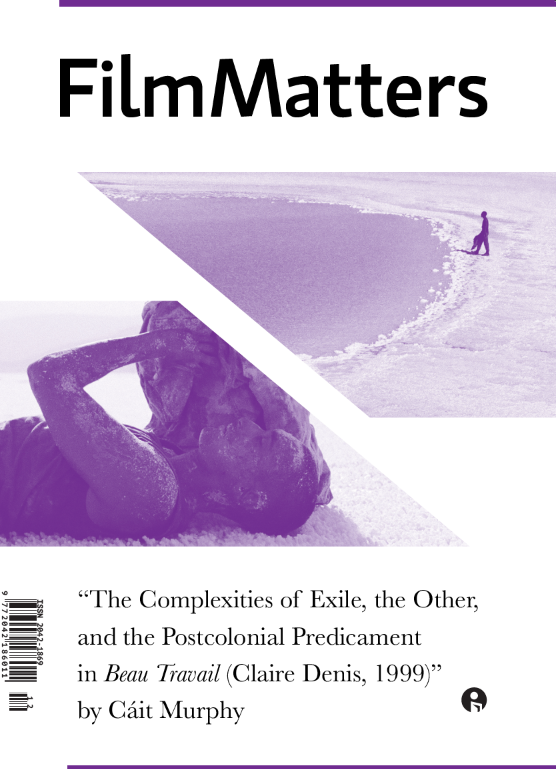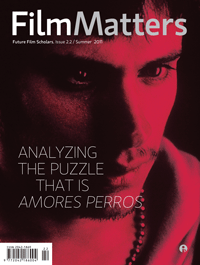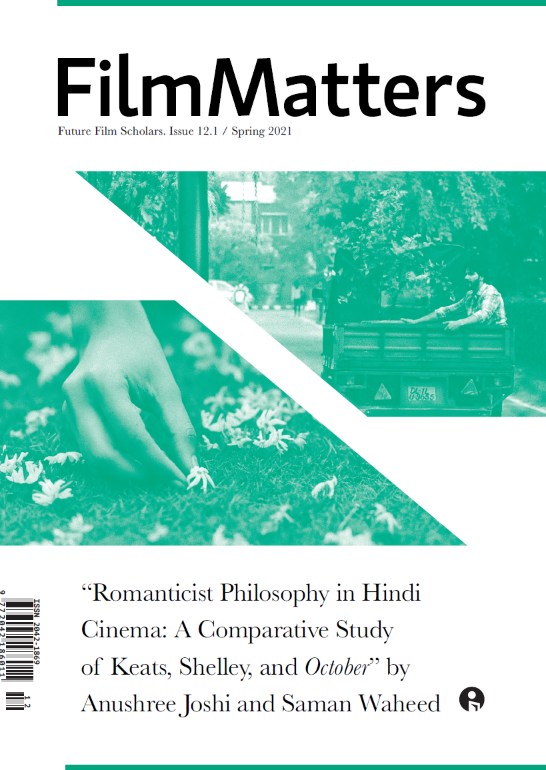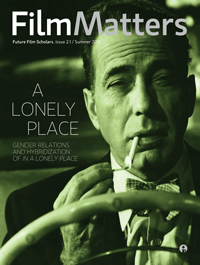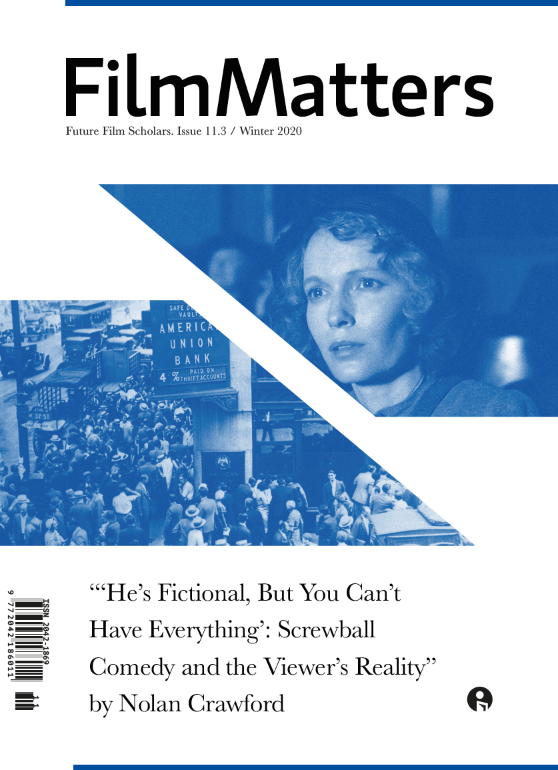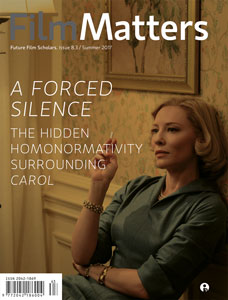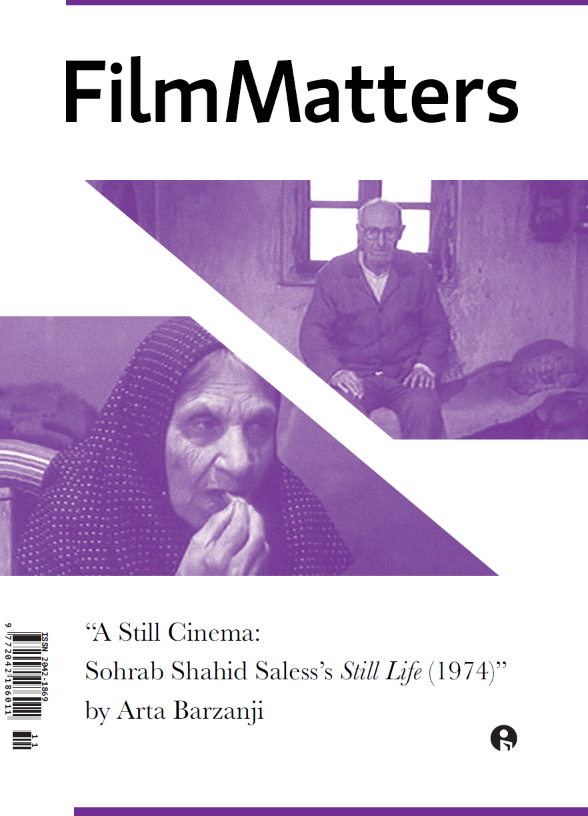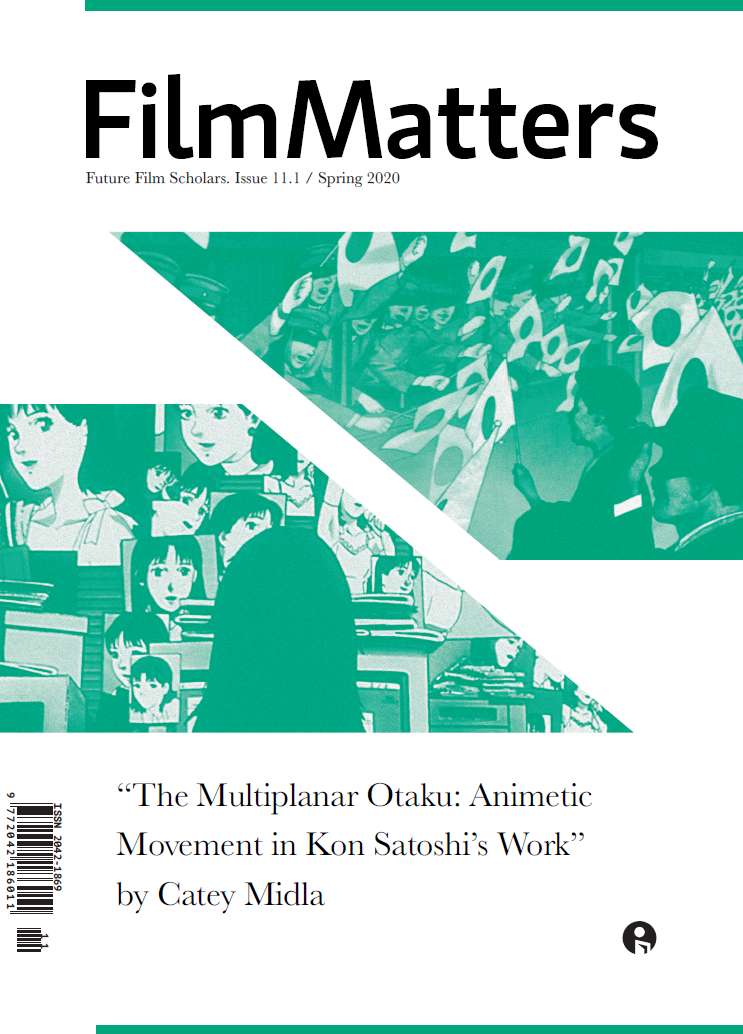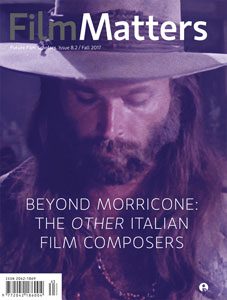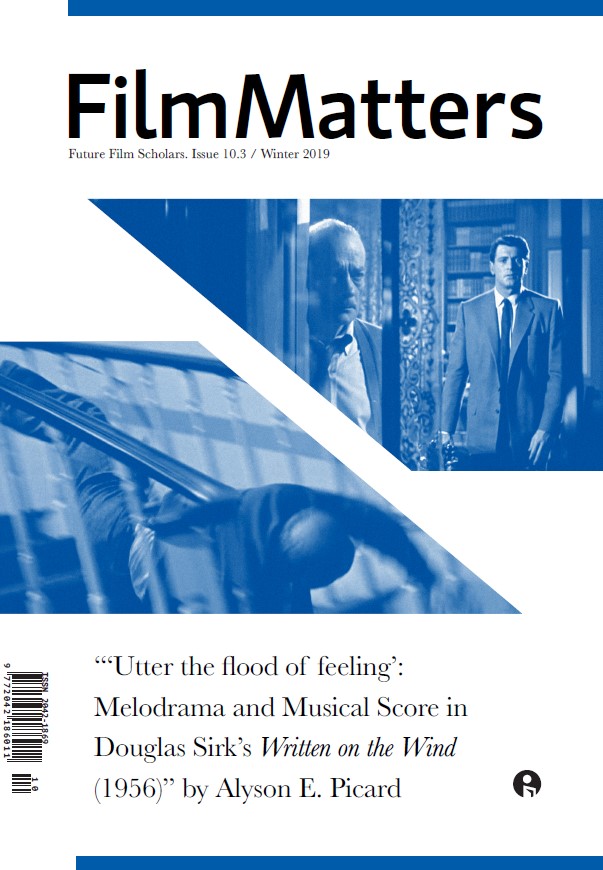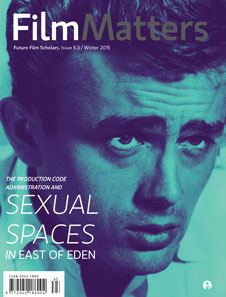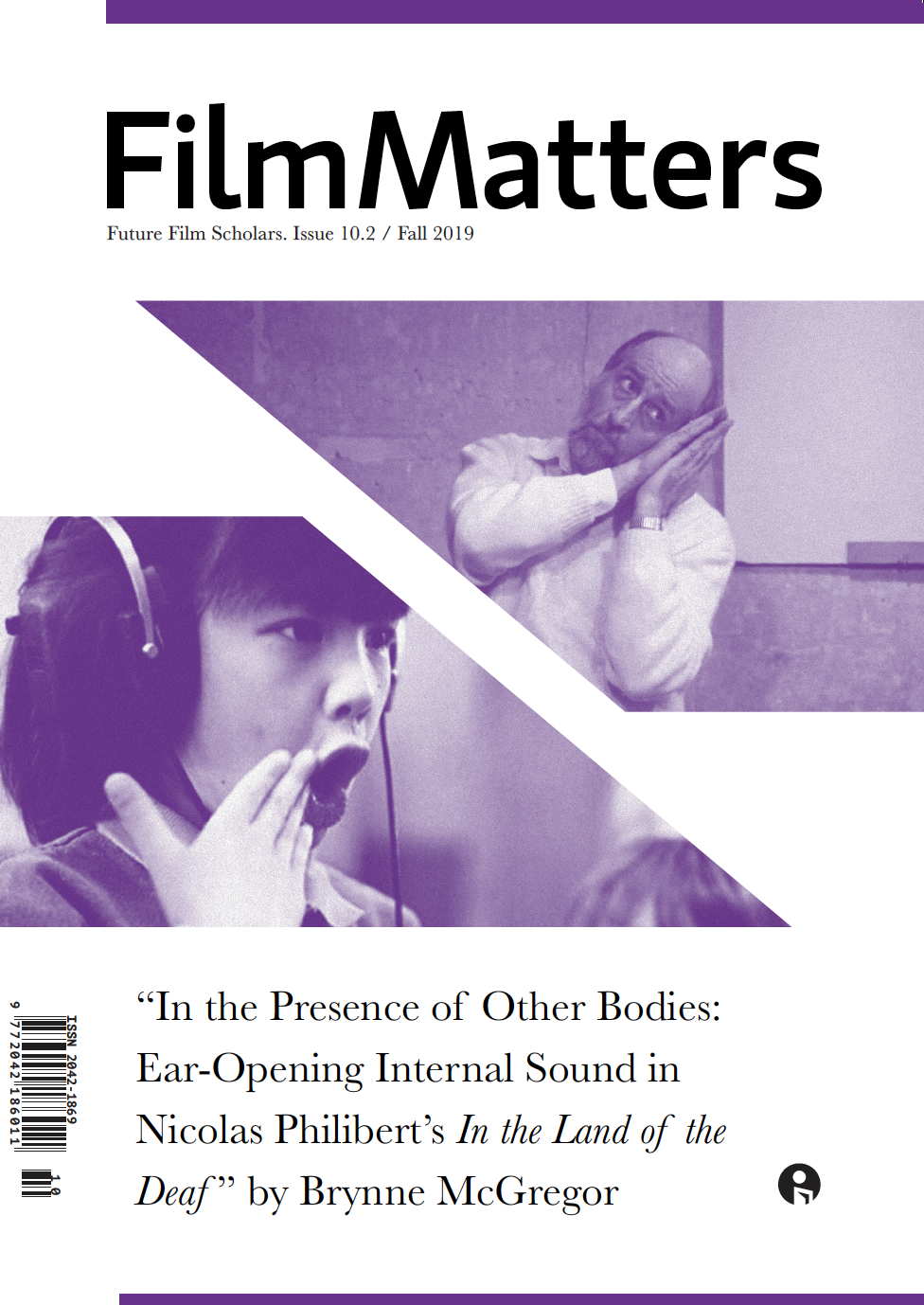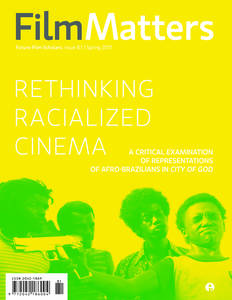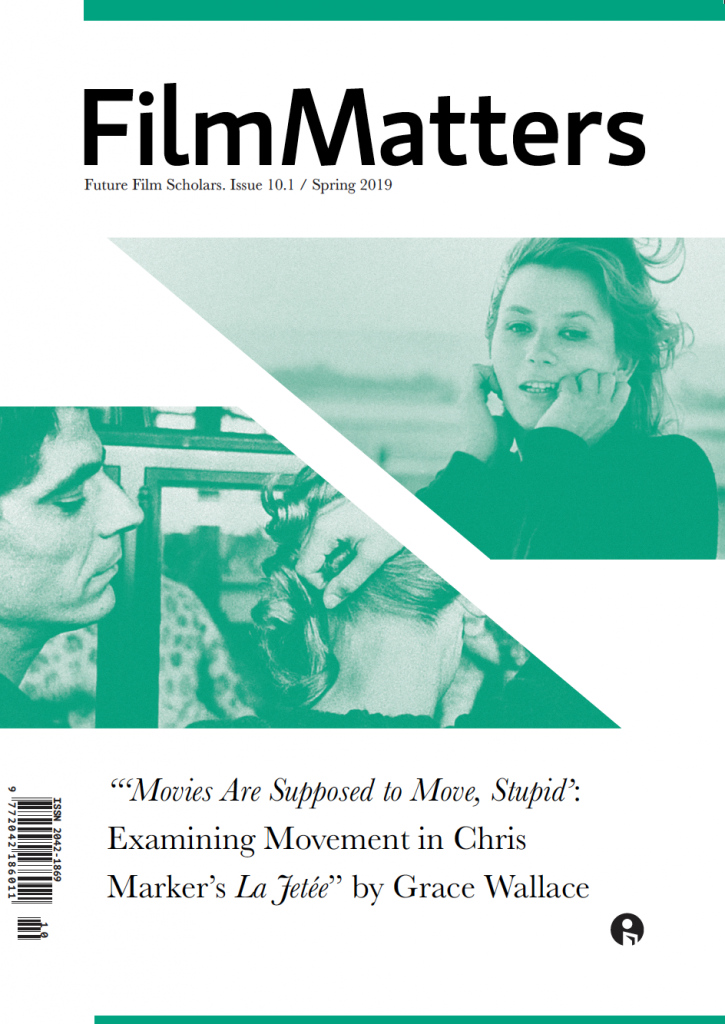Film Matters is pleased to report that our first issue of 2018 is finally out — and with a completely new look, new size, etc. Our spirit is still the same, though: celebrating the undergraduate voice in film and media studies, just as we have been doing since 2010.
In this issue, you will find:
- A tribute to our dear Hannah Frank, 1984–2017
These peer-reviewed feature articles:
- Warped Space Time: Exploiting Schematic Assumptions in Ritual in Transfigured Time by Grant Brighter
- “We’re Just Cinema Thugs”: A Documentary Critique on Cultural Exploitation by Jake Martin Graves
- Mental Illness and the Monstrous Mother: A Comparison of Representation in The Babadook and Lights Out by Elizabeth E. Riggs
- What Makes HAL 9000 a Character in 2001: A Space Odyssey? by Kyle Stanley and Jacob Laham
- I Ain’t Afraid of No Ghosts: Positive Female Representation in the Ghostbusters (2016) Remake by Linnea Warburton
The 2017 New Directors/New Films Festival Review Dossier from Hendrix College:
- Introduction by Gabrielle Fulton, Hunter Herrera, Kaitlin Lowe, Katie Neilson, and Blake Thompson
- Autumn, Autumn (2016) by Blake Thompson
- Documenting Fantasy and Disability by Kaitlin Lowe
- Happiness University: The Strange, the Mundane, and the Sensuous by Gabrielle Fulton
- Lady Macbeth (2016) by Katie Neilson
- The Last of Us (2016) by Katie Neilson and Blake Thompson
- Pendular: Screen Space by Hunter Herrera
- A Tour de France in Four Days by Gabrielle Fulton and Kaitlin Lowe
The following featurettes:
- Global Cinema, For Western Eyes by Eduard Saakashvili
- Analyzing High-Fidelity Thematic Elements of the World of Stalker: From the Tarkovsky Film to the GSC Game World Video Game by Emmett Williams
The Contemporary Science Fiction II Dossier from Messiah College:
- We’ll Teach Them Tricks: Reinstating Normative Hybrid Futures in Alien: Resurrection by Julia Glick
- Empty Space: The Depersonalization of the Future in 2001: A Space Odyssey by Scott Orris
- The “I” in AI: Emotional Intelligence and Identity in Ex Machina by Hayley Wilson
- The Fantasy of Star Wars: Reconsidering Genre in Hollywood’s Biggest Space Movie by Jonathan Wright
- The Science of Star Wars: The Scientific Facts Behind the Force, Space Travel, and More! by Cayce Bower
- Mars in the Movies: A History by Carter B. Emory
- Afrofuturism: The World of Black Sci-Fi and Fantasy Culture by Shaun Ting Sheng Kam
- Exploring Science Through Science Fiction by Christian Pavlovich
And book, DVD/Blu-ray, and film reviews by: Craig Ball, Lizzie Bankowski, Nick Bugeja, Tayler Camplin, Kim Carr, Christopher DeAngelis, Gabrielle Fulton, Matthew Johnson, Tyler Linden, Jaka Lombar, Kaitlin Lowe, Alexandria Rose Moore, Kelsey Saller, Kimberly Mariah Smallwood, Shaun Soman, Chamberlain Staub, Blake Thompson, and Steph Triplett.
For more details about this issue, please visit Intellect’s site: https://www.intellectbooks.co.uk/journals/view-issue,id=3635/
If you are an undergraduate writing about film and media, we want to celebrate your voice, too — so please get in touch with us today!





